In the section within the municipality of Camerata Cornello, the path comes closer to the historical route of the Priula Way again, on the right bank of the river Brembo. After descending the cobbled slope at Cornello (connecting with Via Mercatorum at the roundabout below), it runs almost completely at the bottom of the valley, partly on the cycle/pedestrian path, and partly on the Provincial Road 29 bis.
Tracciato Storico
“From Cornello the path descended steeply down to the Orbrembo quarter. The strada nova (new road), on the other hand, entirely hewn from the rock, after a large two-arched bridge over the Valle dei Mulini valley, bypassed Cornello, continuing alongside the river Brembo on a fairly flat though winding road. The fact that it ran around Cornello was the main reason why this beautiful medieval village has preserved its ancient splendour intact to this day. In the next section, at Orbrembo, Priuli completed another admirable project. The old valley road climbed to a height of fifty metres and descended along a spur of rock where the Valle Parina valley joins the river Brembo. The strada nova, on the other hand, runs around this ridge, with a dry-stone wall attached to the rock and suspended over the river. This was probably the place that Da Lezze referred to as the Gocchia (now known as Goggia), a section difficult to travel, where the river flows enclosed in a dangerous gorge.”
Itinerario escursionistico
Difficoltà: Turistico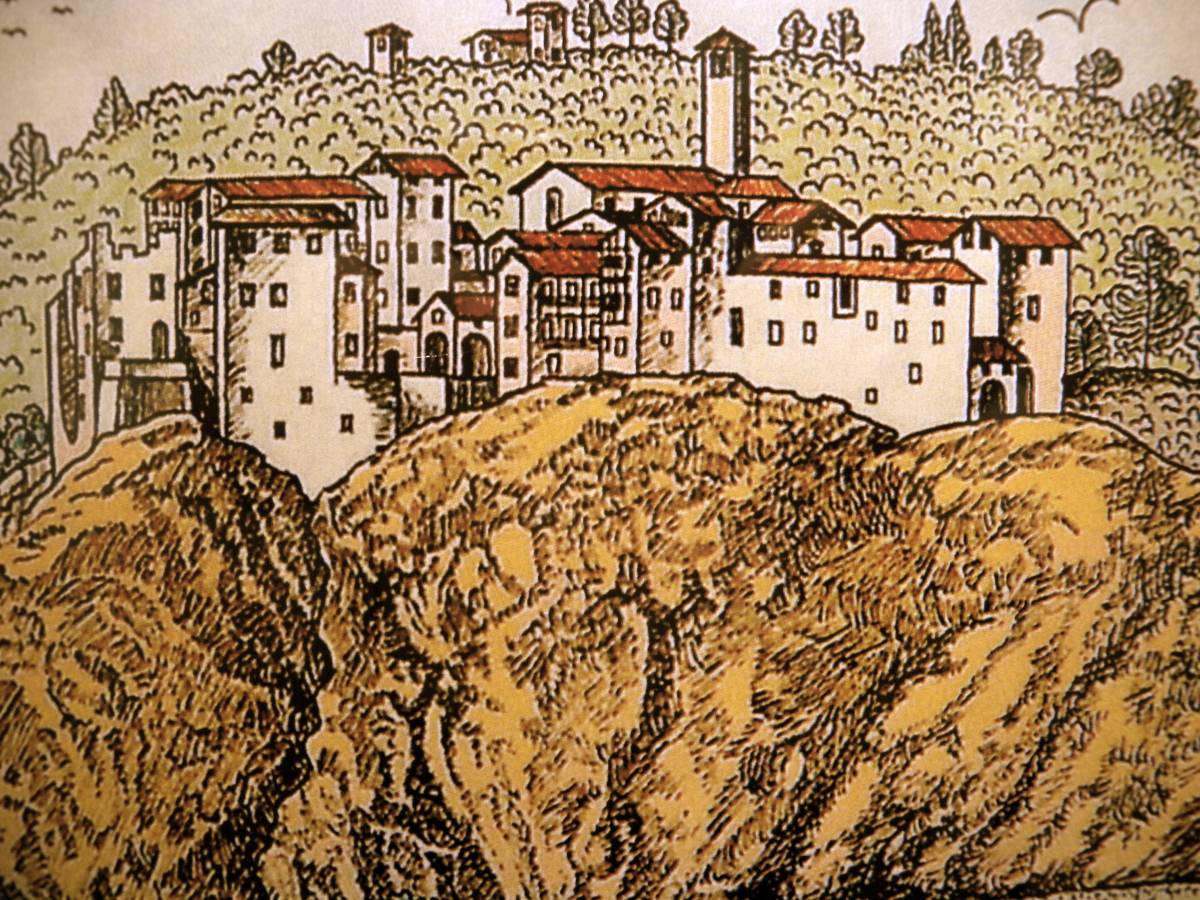
Cornello is a village of medieval origin whose name is linked to the ancient Tasso family, famous the world over for the poetic talent of Torquato Tasso and for the entrepreneurial skills of some of its exponents who, starting from the 16th century, managed the imperial Habsburg post houses.
In the Middle Ages, the village of Cornello was an important centre for trade and the transit of people and goods, as a result of Via Mercatorum, the merchants’ road, which linked Bergamo to Valtellina and connected some of the most important towns in the Valle Brembana valley.
From 1592 onwards, the village became isolated, due to the construction of a new road, the Priula Way, commissioned by the Venetian government to connect Bergamo directly to Valtellina without passing through Spanish territories. The new road in fact ran along the valley floor, separating the village from the new road arrangement. This marked the start of a long period of decline for Cornello. However the village’s isolation helped to preserve its distinctive layout which, except for some alterations made during the second half of the 20th century, can still be seen in its medieval guise, a characteristic that has ensured that Cornello is included amongst “The Most Beautiful Villages in Italy.”
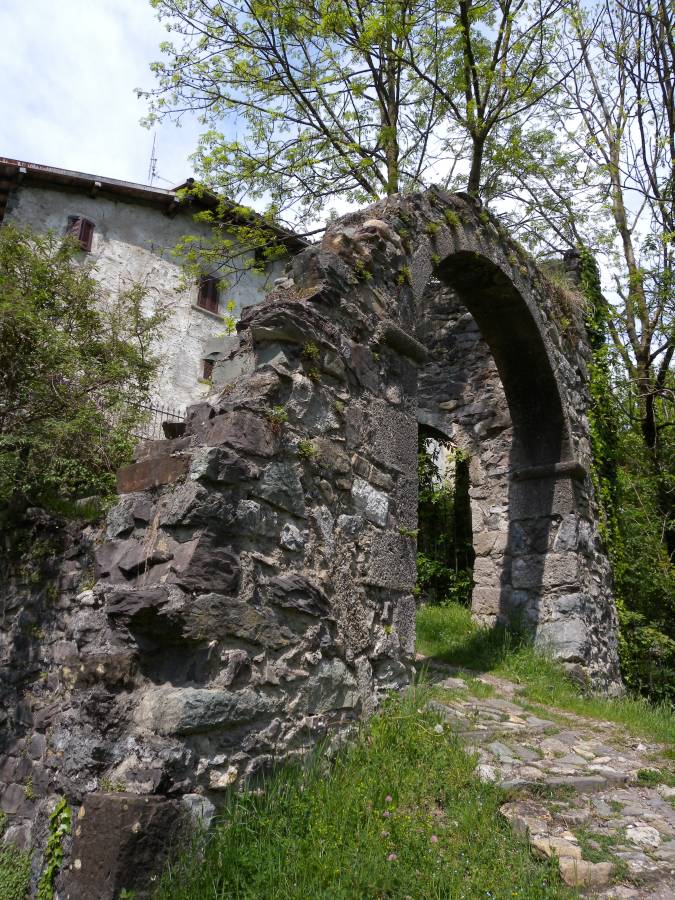
An ancient house that belonged to the Tasso family. In the southern part of the village, there are the ruins of the oldest dwelling belonging to the Tasso family, though they had other houses in Cornello, such as the palace in the village square, which has the family coat of arms frescoed on the main façade. Between 1986 and 1989, the Province of Bergamo restored the site and, during the work, a large number of ceramic fragments dating back to the 15th century and from later periods emerged. The ruins are part of the Cultural Centre “’Mercatorum e Priula – vie di migranti, artisti, dei Tasso e di Arlecchino” (Mercatorum and Priula – Ways for migrants, artists, the Tasso family and Harlequin) https://www.visitbrembo.it/it/dove-andare/poi/rovine-dimora-dei-tasso
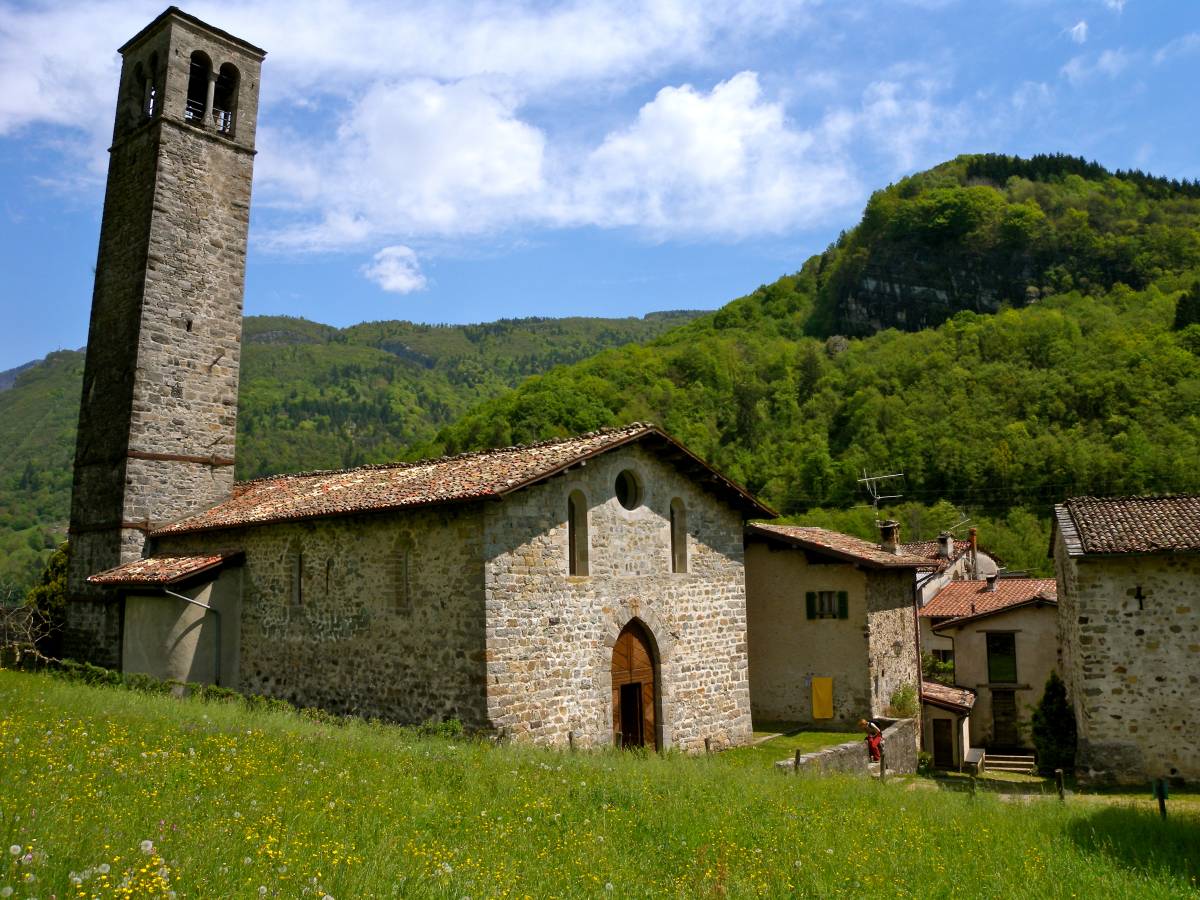
Church of Saints Cornelius and Cyprian. The Church of Santi Cornelio e Cipriano (Saints Cornelius and Cyprian) is at the highest point of the village, overlooking it with its leaning bell tower culminating in a belfry with four Romanesque double lancet windows (one of the few examples in the Val Brembana valley). The church, as it appears today, is almost certainly the result of the radical transformation of an earlier building that must have already existed in the 12th-13th centuries, of which few traces remain. It underwent notable changes during the 15th century when it was decorated with frescoes covering the walls, some of which date back to 1475. The church’s façade is simple, in hewn blocks of stone with a large pointed arch portal; the interior has a single nave divided into three bays by two pointed stone arches that support the beams and exposed planks of the pitched roof. The church’s construction and management were linked to the presence of the Tasso family in the village, who supported it financially. The family’s influence can be seen in many elements of the church such as the private altar to the right of the entrance and the presence of two frescoes dedicated to Saint Catherine of Alexandria, the patron saint of postal couriers. The church is part of the Cultural Centre “Mercatorum e Priula – vie di migranti, artisti, dei Tasso e di Arlecchino” (Mercatorum and Priula – Ways for migrants, artists, the Tasso family and Harlequin) https://www.visitbrembo.it/it/dove-andare/poi/chiesa-santi-cornelio-e-cipriano
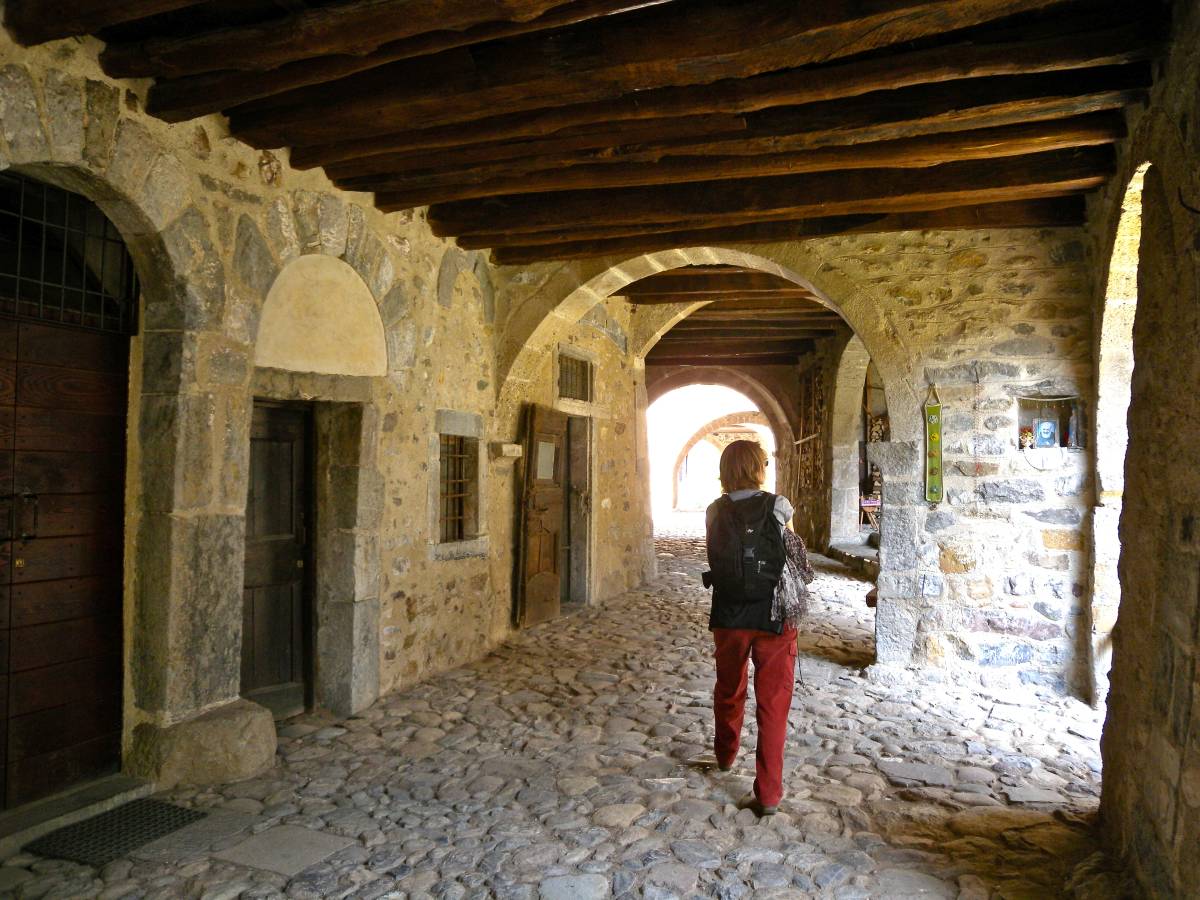
Porticoed street in Cornello. The route of Cornello’s Via Mercatorum was marked by the presence of a porticoed street, where, until the arrival of the Venetians in the Bergamo area, the only market in the Val Brembana valley took place. The possibility of staging a market gave Cornello great importance: the market was a place where goods to be bought and sold could be inspected, a location where the links between resources, techniques and needs could be verified, and where the latest ideas and inventions could be circulated. Via Mercatorum is part of the Cultural Centre “Mercatorum e Priula – vie di migranti, artisti, dei Tasso e di Arlecchino” (Mercatorum and Priula – Ways for migrants, artists, the Tasso family and Harlequin) https://www.visitbrembo.it/it/dove-andare/poi/la-strada-porticata
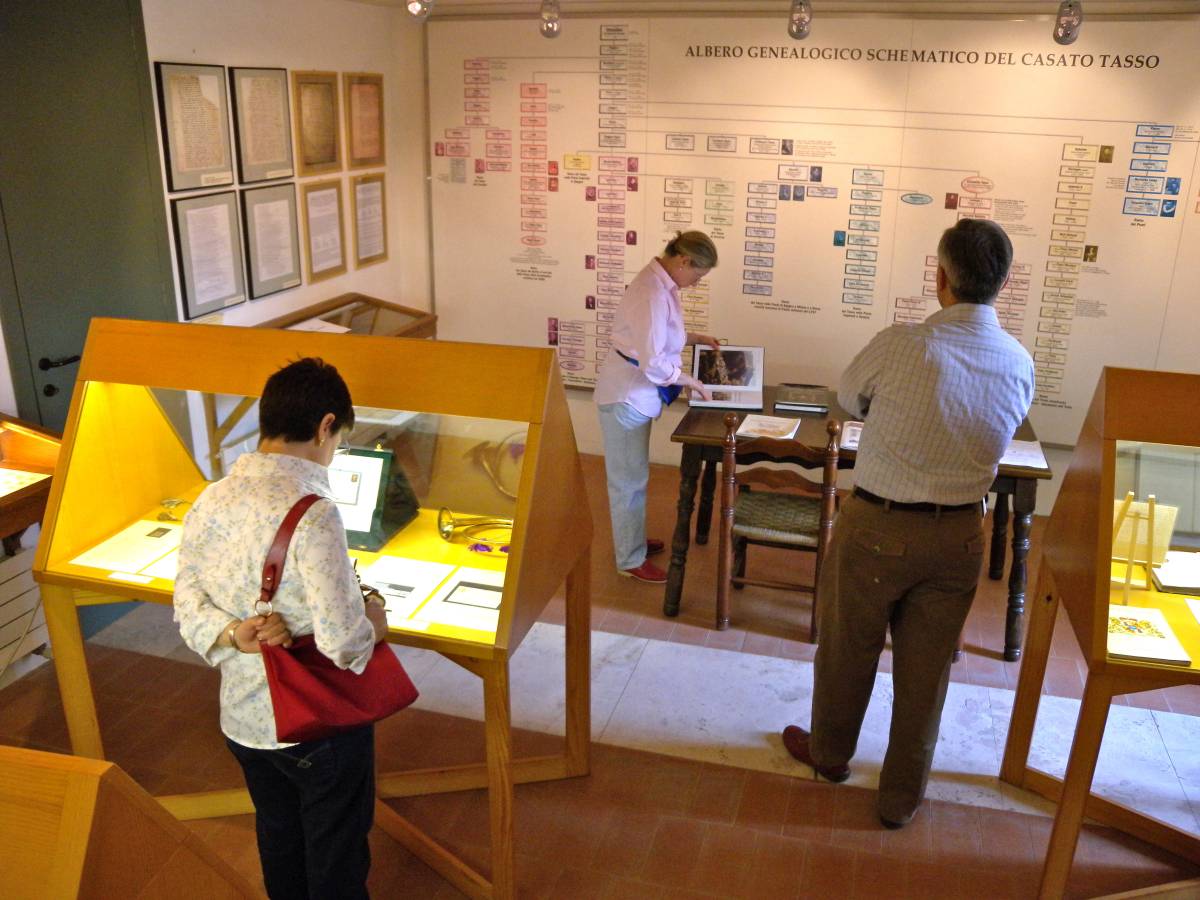
Tasso Family and Postal History Museum. Founded in 1991, it is housed in two historic buildings in the medieval village of Cornello. The museum is subdivided into four exhibition spaces, each of which explores the history of the postal service and the Tasso family. Numerous documents illustrating their work on the management of postal services, and postal history in general, are preserved here, including a letter dated 1840 franked with the world’s first postage stamp, the famous Penny Black. The museum is part of the Cultural Centre “Mercatorum e Priula – vie di migranti, artisti, dei Tasso e di Arlecchino” (Mercatorum and Priula – Ways for migrants, artists, the Tasso family and Harlequin).
https://www.visitbrembo.it/it/dove-andare/poi/museo-dei-tasso-e-della-storia-postale
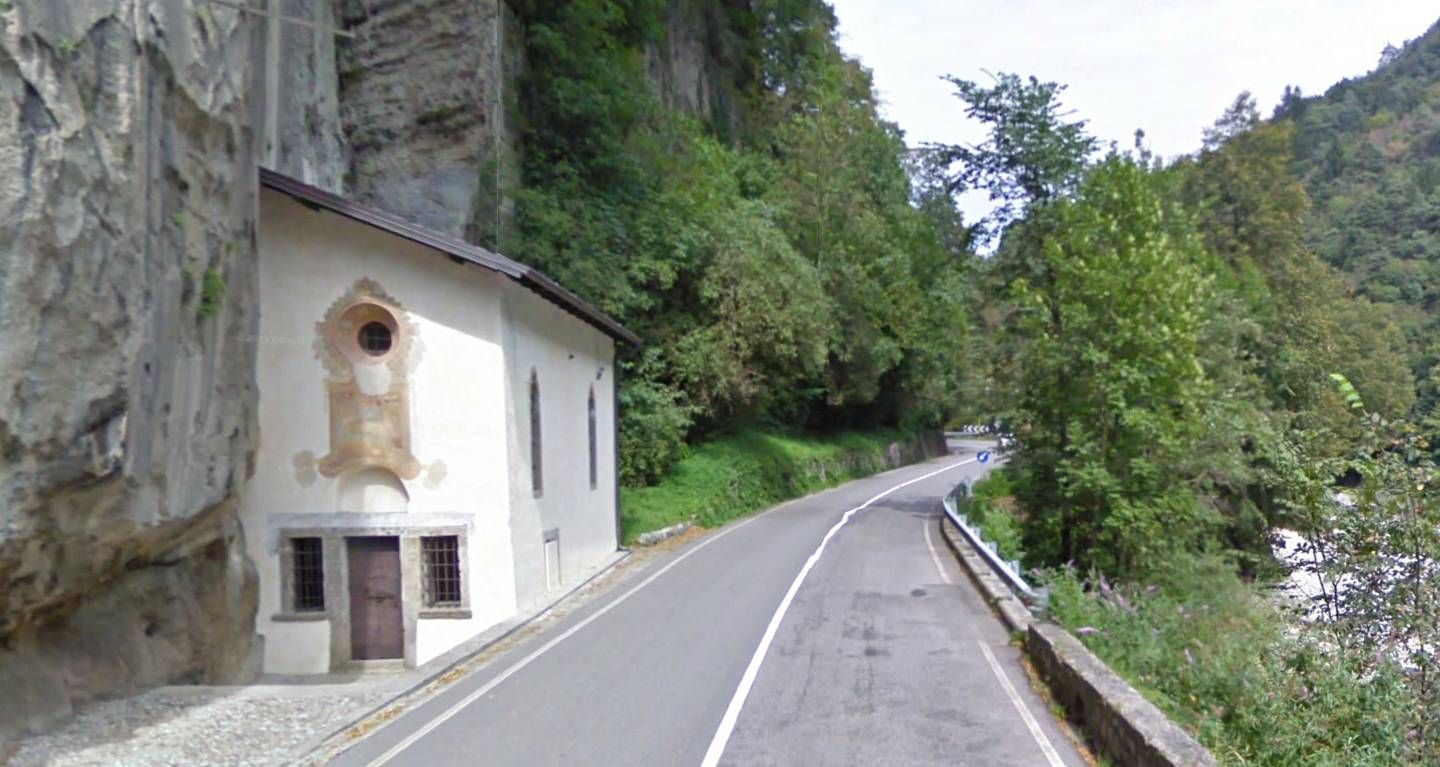
Darco Oratory. Sited on the valley road (previously the Priula Way) in a position very close to the Brembo river, this is a small construction with a single interior, set into the rock, on the left of the roadway.
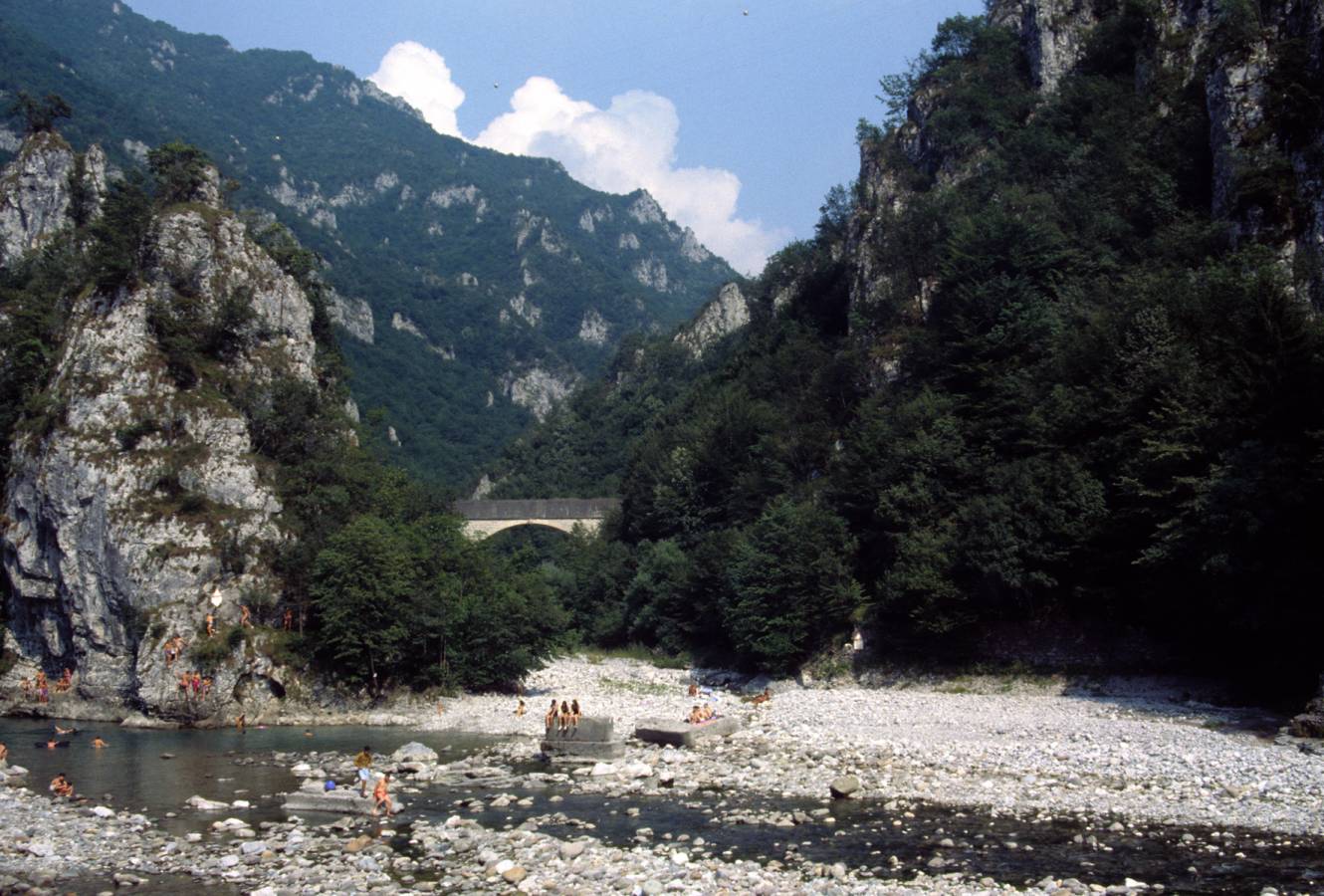
According to historians, this location is the ancient administrative boundary between the lower and upper Val Brembana valley. The term means “spire” or “rock pillar” and it refers to the narrow and dangerous passage. In fact, this was an obligatory stage for all the routes that descended fan-like from the Bergamo Alpine passes following the many branches of the river Brembo, then tracing the course of the principal valley from Lenna. “La Goggia represented a symbolic border between the Upper Brembana valley, which had possessed its own independent governance and its own statutes since 1333, and the Lower Brembana valley. Even though road widening work has removed much of this rock spur, leaving just a sharp bend, you can still perceive the geographical divide between the two territories at this point after Camerata Cornello (travelling up the valley). However there are two opinions regarding the place-name Goggia, according to which it does not refer to the narrowing of the valley near the intersection between the Val Parina valley and the river Brembo: some believe that the Goggia is the ancient tunnel excavated into the conglomerate rock just after the church Chiesetta del Santo along the Priula Way, a very narrow and dangerous point. But in this hypothesis, it is impossible to justify the fact that the place-name ‘Agugya’ is found as early as 1261. Others consider that the name Goggia can be referred to the rock in the shape of a needle (with an eye) still visible today at the bottom of the Parina Valley.”